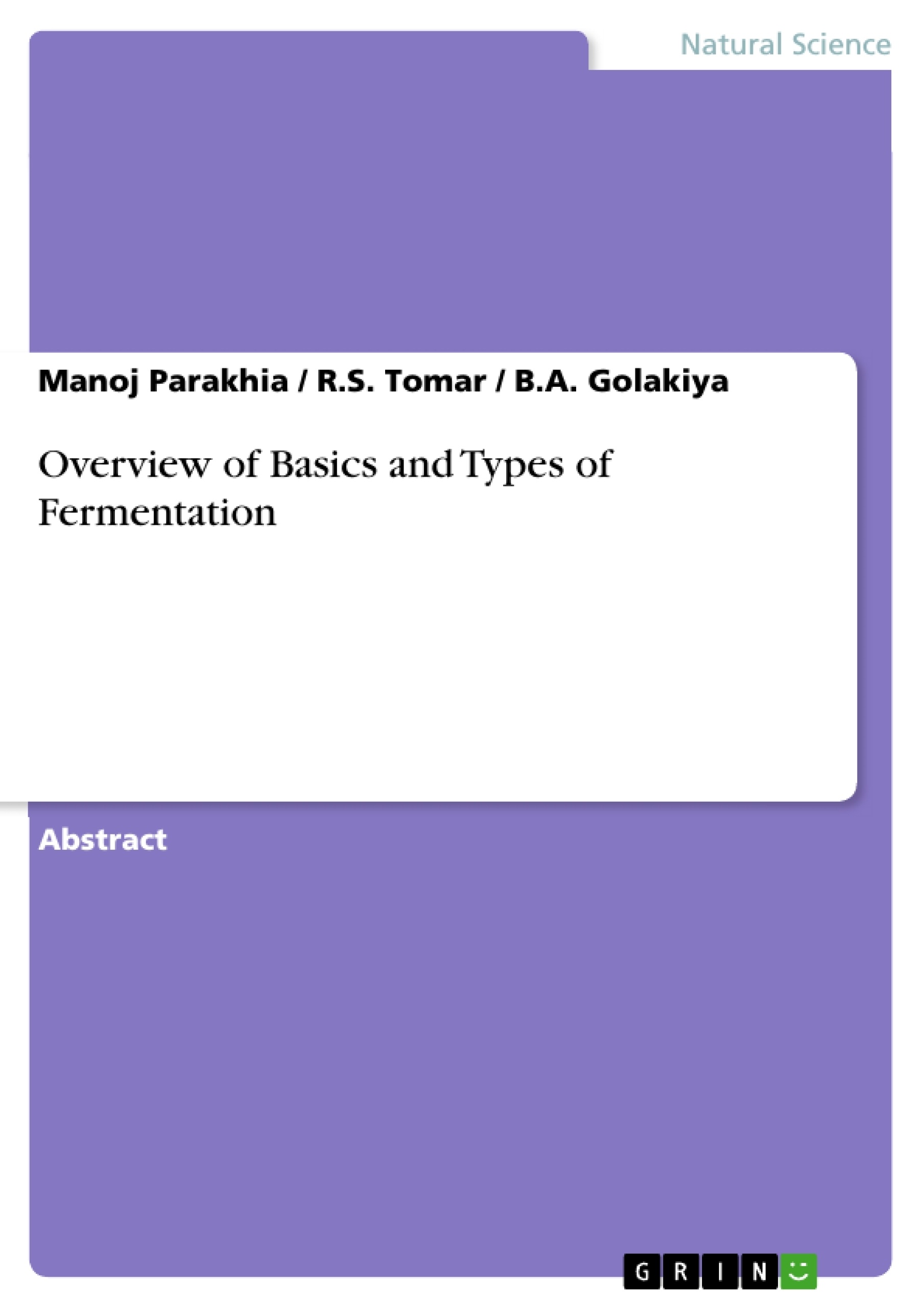This summary gives an overview of Industrial Microbiology in key words.
Industrial Microbiology deals with all type of Microbiology which has an economic impact. It concerns with Isolation and Identification of Microbes from natural environment such as soil and water and optimizing the cultural conditions required for obtaining rapid and massive growth of these organism in laboratory and in frequenter.
Thus the fermentation industry is a part of industrial Microbiology here explain the basic concept of fermentation and the different parts of the fermentation process also explain the design of fermenter.
Table of Contents
- 1. General concept of industrial microbiology
- 1.1 Concept of Fermentation
- 1.2 The range of Fermentation Processes
- 1.3 The Component part of a Fermentation process
- 2. The Medium for the industrial fermentation
- 2.1 Component of Media
- 2.2 Ideal Characteristics of Antifoam Agent
- 2.3 Fed Batch techniques
Objectives and Key Themes
This text aims to provide a foundational understanding of industrial microbiology, focusing specifically on fermentation processes. It explores the various types of fermentation, the necessary media components, and the industrial applications of microbial products.
- Concept and definition of fermentation
- The range of industrial fermentation processes
- Media optimization for industrial fermentation
- Production of microbial biomass, enzymes, and metabolites
- Industrial applications of fermentation products
Chapter Summaries
1. General concept of industrial microbiology: This chapter introduces the field of industrial microbiology, defining it as the branch of microbiology concerned with the economic applications of microorganisms. It highlights the importance of isolating, identifying, and cultivating microbes for large-scale production. The chapter establishes the connection between industrial microbiology and the fermentation industry, providing a broad overview of the field's scope and significance. The concept of fermentation is introduced, tracing its historical understanding from its association with alcoholic beverage production to its modern, broader definition encompassing both aerobic and anaerobic microbial processes leading to economically valuable products. The chapter lays the groundwork for subsequent chapters by emphasizing the industrial significance of microbial processes.
2. The Medium for the industrial fermentation: This chapter delves into the crucial role of the medium in successful industrial fermentation. It details the components of a suitable fermentation medium, explaining their functions and importance for microbial growth and product formation. The chapter specifically discusses antifoam agents, their ideal characteristics, and the need for their inclusion in industrial processes to prevent equipment damage and maintain efficient fermentation. Further, it touches upon advanced fermentation techniques, such as fed-batch techniques, which allow for controlled nutrient addition during fermentation to optimize both biomass production and product yield. The chapter is essential in providing a comprehensive understanding of the technical requirements for maximizing the productivity of fermentation processes.
Keywords
Industrial microbiology, fermentation, microbial biomass, microbial enzymes, microbial metabolites, media optimization, fed-batch techniques, antifoam agents, recombinant products, economic applications.
Frequently Asked Questions: Industrial Microbiology Text Overview
What is the main topic of this text?
This text provides a comprehensive introduction to industrial microbiology, with a specific focus on fermentation processes. It covers the fundamental concepts, key components, and industrial applications of microbial production.
What are the key themes explored in the text?
The text explores the concept and definition of fermentation, the diverse range of industrial fermentation processes, media optimization techniques for industrial fermentation, the production of various microbial products (biomass, enzymes, and metabolites), and the wide range of industrial applications of these fermentation products.
What topics are covered in Chapter 1 ("General concept of industrial microbiology")?
Chapter 1 introduces the field of industrial microbiology, defining it and highlighting its economic importance. It explains the concept of fermentation, tracing its historical understanding and modern definition. The chapter emphasizes the industrial significance of microbial processes and lays the groundwork for subsequent chapters.
What are the key aspects discussed in Chapter 2 ("The Medium for the industrial fermentation")?
Chapter 2 details the crucial role of the fermentation medium, explaining its components and their functions in microbial growth and product formation. It discusses antifoam agents, their ideal characteristics, and the use of fed-batch techniques for optimizing both biomass and product yield in industrial processes.
What are some of the key components of a fermentation medium?
While not explicitly listed, the text implies that a fermentation medium includes nutrients necessary for microbial growth and product formation. The specific components would depend on the microorganism and the desired product.
What are the objectives of this text?
The text aims to provide a foundational understanding of industrial microbiology, specifically focusing on fermentation processes. It seeks to equip readers with knowledge about various fermentation types, media components, and industrial applications of microbial products.
What are the ideal characteristics of an antifoam agent?
The text mentions the importance of antifoam agents but doesn't specify their ideal characteristics beyond preventing equipment damage and maintaining efficient fermentation.
What is the significance of fed-batch techniques in industrial fermentation?
Fed-batch techniques allow for controlled nutrient addition during fermentation, optimizing both biomass production and product yield. This leads to improved efficiency and higher productivity in industrial processes.
What are some examples of industrial applications of fermentation products?
The text doesn't provide specific examples but implies a wide range of applications given the mention of microbial biomass, enzymes, and metabolites as products.
What keywords are associated with this text?
Key terms include: industrial microbiology, fermentation, microbial biomass, microbial enzymes, microbial metabolites, media optimization, fed-batch techniques, antifoam agents, recombinant products, and economic applications.
What types of fermentation processes are discussed?
The text mentions a "range of fermentation processes" but does not specify the exact types. The implication is that both aerobic and anaerobic processes are included.
Where can I find a Table of Contents?
The provided HTML includes a detailed table of contents outlining the structure of the text.
- Quote paper
- Dr Manoj Parakhia (Author), R.S. Tomar (Author), B.A. Golakiya (Author), 2015, Overview of Basics and Types of Fermentation, Munich, GRIN Verlag, https://www.grin.com/document/304096




